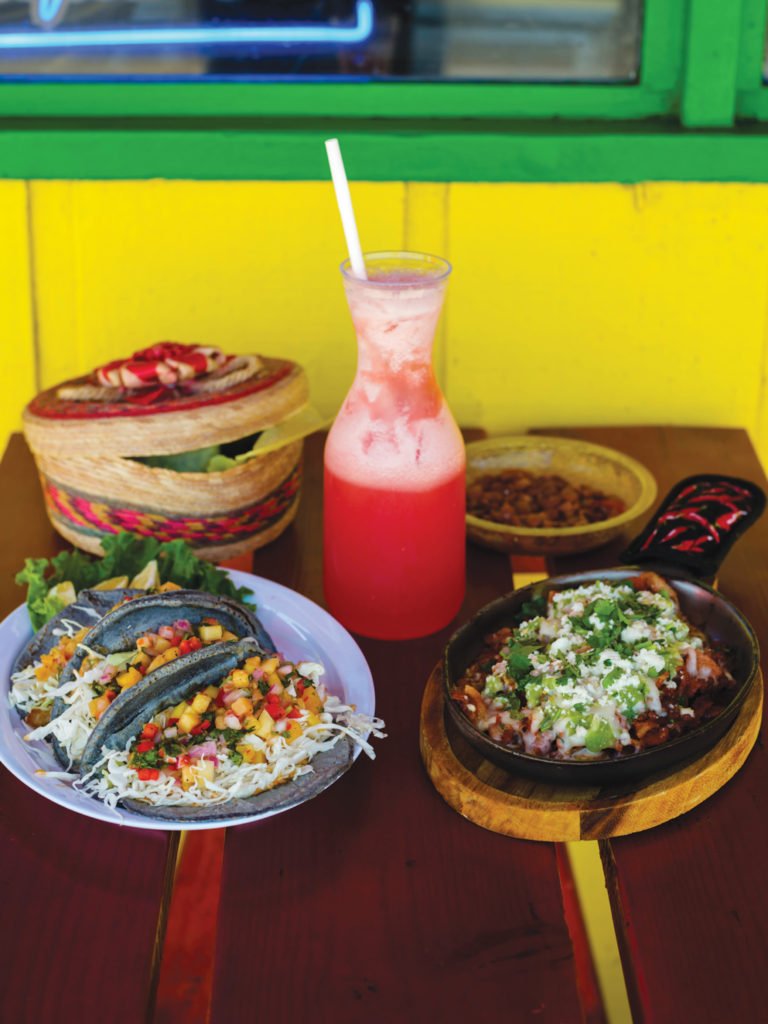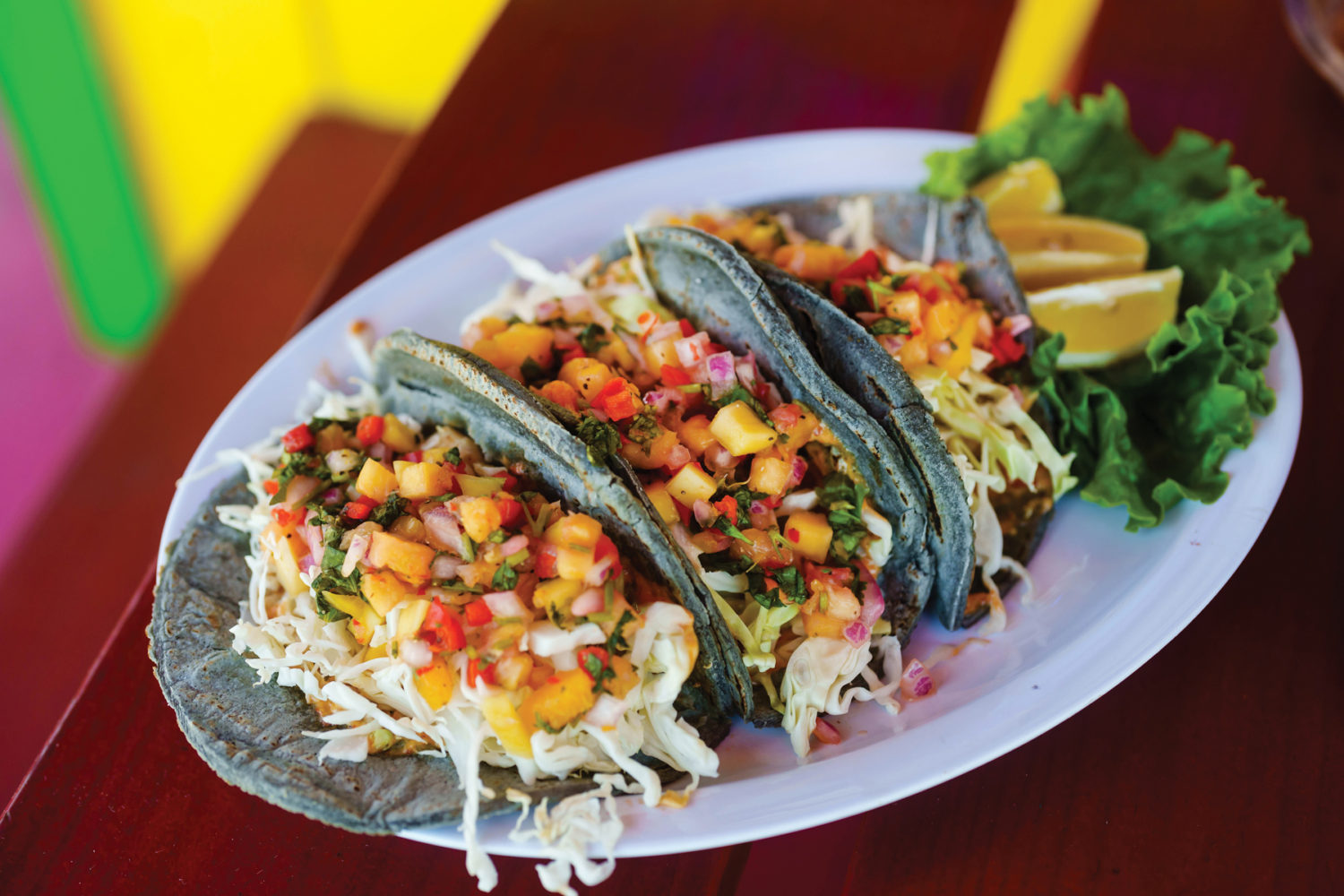
The Love Letter
Story by Melissa Newman
Photography by Stephen Heraldo
Distinguished by its colorful buildings, sizable population and seafood forward cuisine, Mexico City has a history that is rich with the influences of Aztec, Spanish and Lebanese cultures. The interior capital city of Mexico is a travel destination for adventurous tourists whose love for a good taco rivals only their appreciation for colorful, classic architecture. For Arroyo Grande taqueria Owner Jose Rojas, his restaurant Frutiland La Casa Del Sabor is a love letter to his hometown. “There was a place called Frutilandia across the street from where I went to elementary school. So I decided to do Frutiland in English and then the Spanish name (La Casa del Sabor translates in English to “the house of flavor”) is for our people,” Jose says. “Half of the name respects the USA and the other half is for our Hispanic community.”
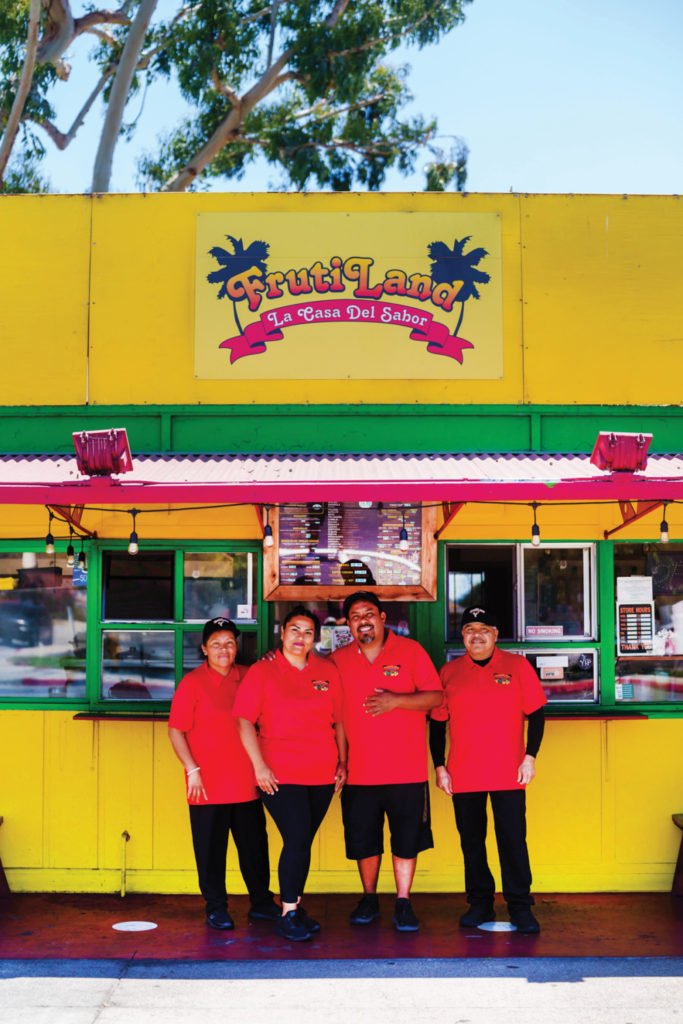
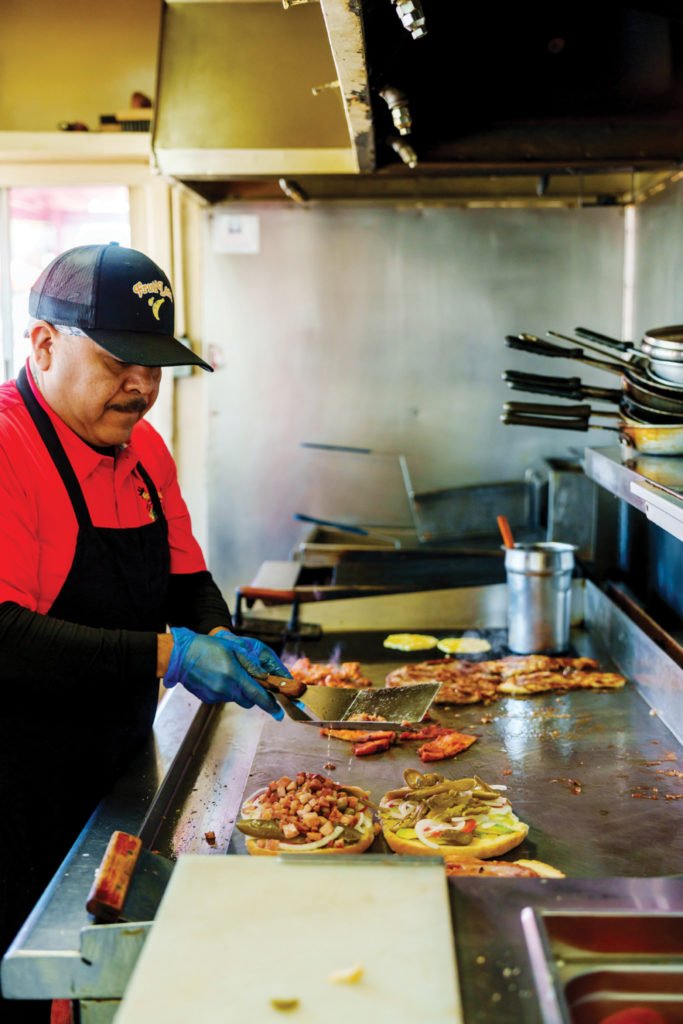
Jose opened the restaurant with his wife in 2010. Since then, Jose, his family and staff have crafted by hand each blue corn tortilla for menu items like huaraches, quesadillas and tacos. “It was important to make everything as authentic as possible because there is nothing like it around here. Nothing here is prepackaged or coming out of a can; we make everything from scratch,” he shares. “I wanted people to know exactly what it’s like eating in Mexico City.” The references to Jose’s hometown aren’t just in the food. He pays homage to his birth place in the vibrant colors of the exterior of his restaurant, which is banana yellow with lime green accents.
With nearly 12 years in business, Jose has carved out his own little piece of Mexico in California. The small restaurant is a landmark for locals and those passing through. One customer from Los Angeles said he couldn’t drive past the nearby freeway exit without making a taco stop. “We’ve been coming here for 10 years,” says Jacob Bukilica. “We love the food and the huge portion sizes. This meal is going to be enough for lunch and dinner.”
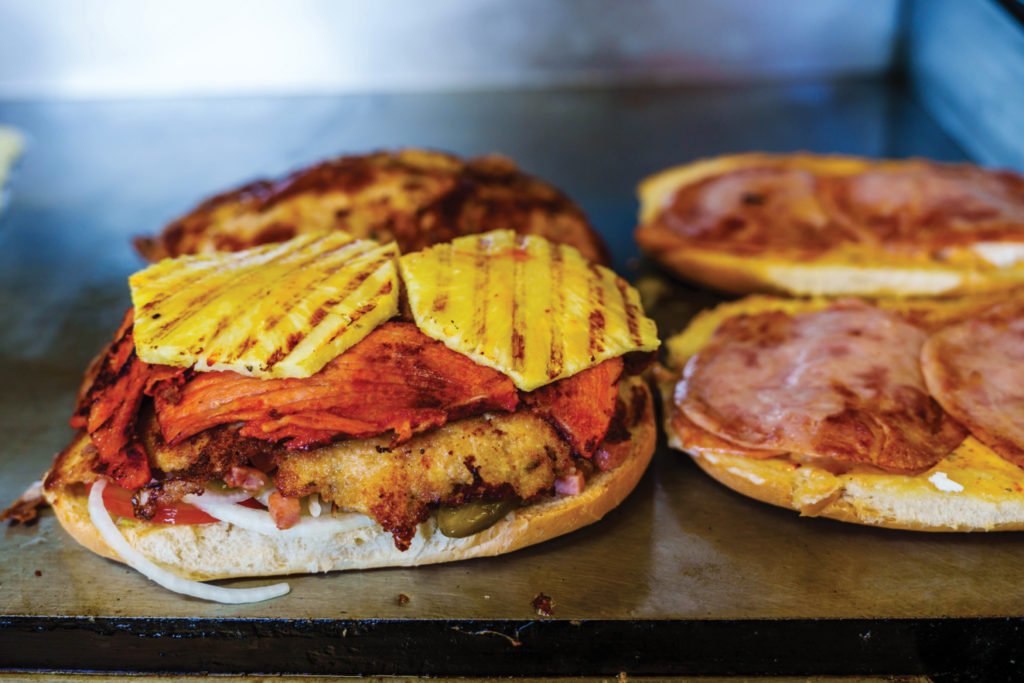
Advising people to come to Frutiland hungry is understated. The restaurant’s smallest torta weighs in at nearly 2 pounds and Yelp reviews consistently describe it as shareable between two or three people. There are more than two dozen torta options on the menu and crafting these monstrous masterpieces takes time and precision. Through the windows of Frutiland, customers can watch staff press flour for tortillas, carefully grill meats and chop fresh vegetables for the various dishes. For those without a background in Spanish, the traditional names on the menu may be intimidating. But whether you order the chilangas clams, arcoiris tacos or alambre plate, it’s sure to be tasty and filling.
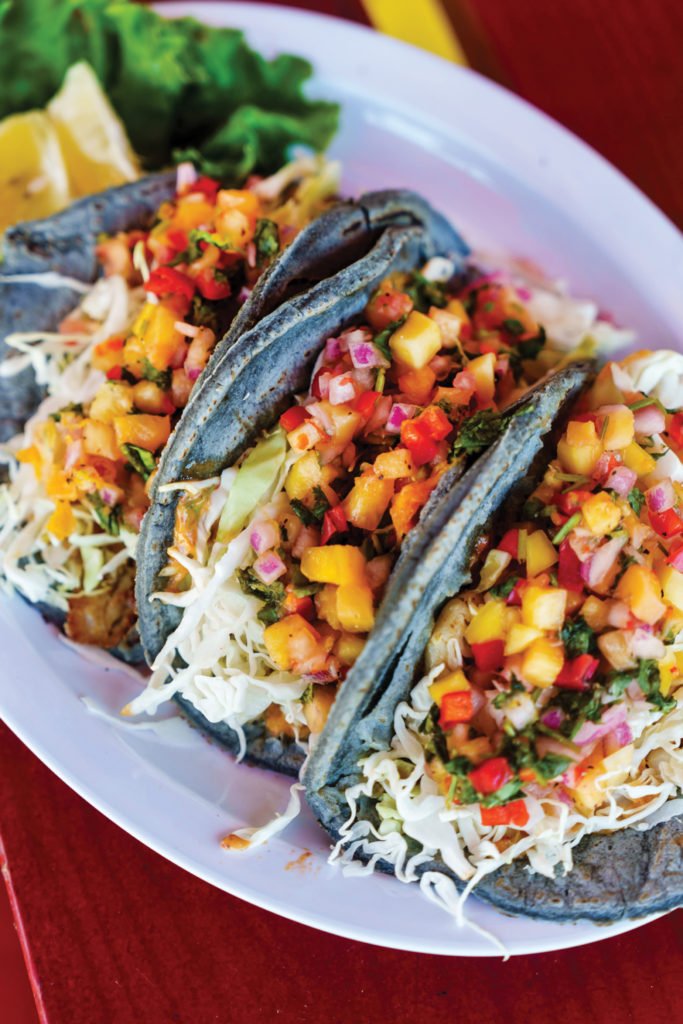
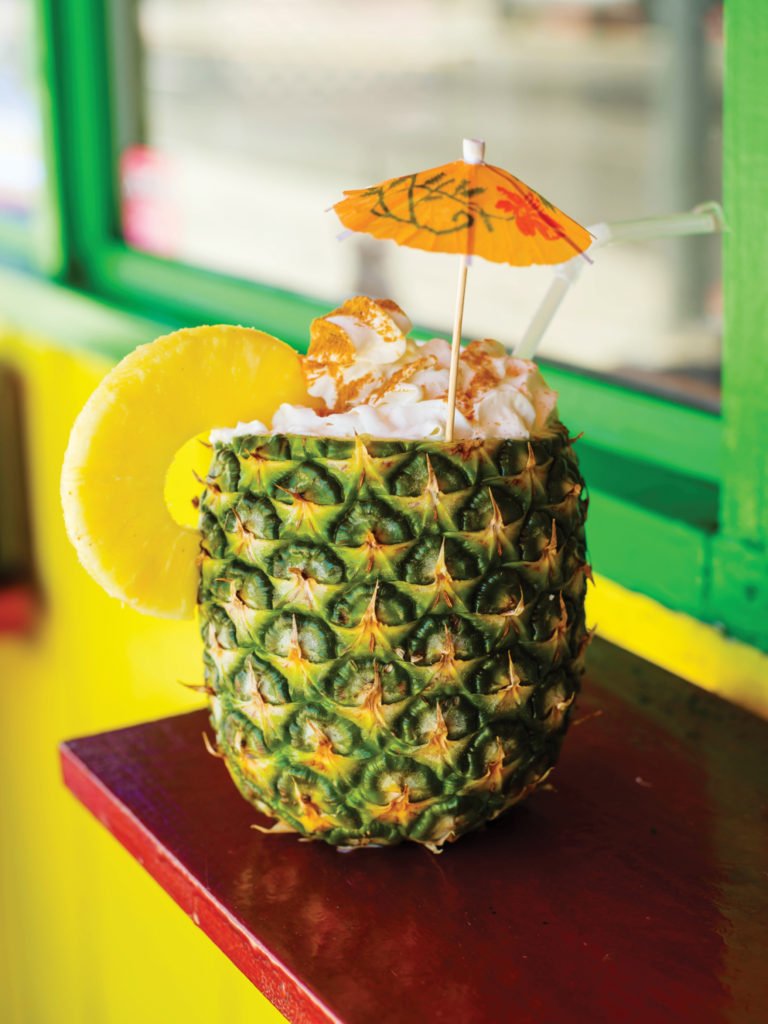
Cooking everything from scratch makes for a fast-paced environment where guests consume the products just as fast as they’re made. This careful balancing act nearly came crashing down during the COVID-19 pandemic. “I want to cry thinking about it — I was about to give up,” Jose expresses. “It was tough because we lost family members and had no money coming in and no business. I used my kids’ savings to get our business back. I almost gave up, but we are here.”
This story of resilience is an extension of Jose’s early life in America, a time of adaptation that tested his strength in new and unexpected ways. Learning from the challenges imposed by the health crisis, Jose decided to diversify his business by offering street tacos with trompo outside the restaurant on Friday nights. “People come from Lompoc and Paso Robles to try these tacos because they don’t taste like what anyone else is offering,” he notes. Adding to his list of homemade sweet treats are the fresh juices Jose’s restaurant now delivers to local businesses. The restaurateur continues looking for new opportunities to grow and draw even more guests to his house of flavor, and finding creative ways to withstand the emergence from the pandemic.

